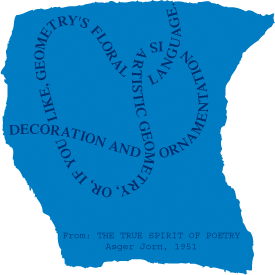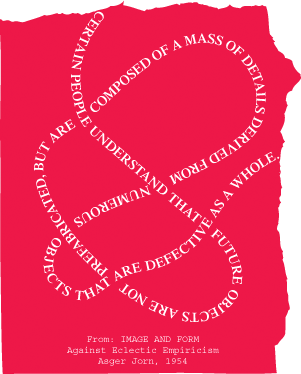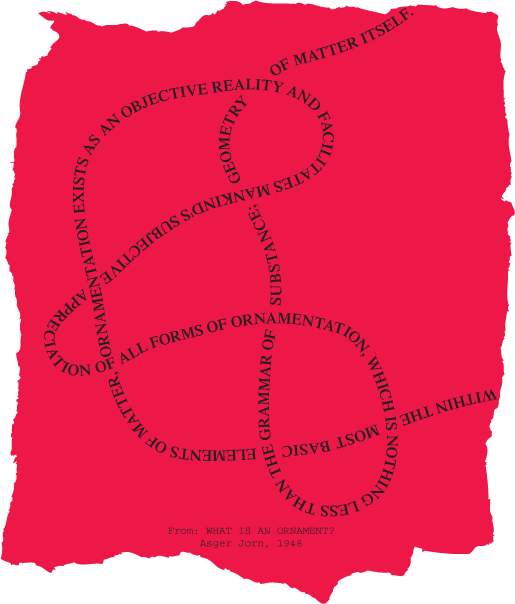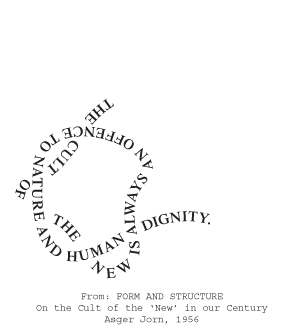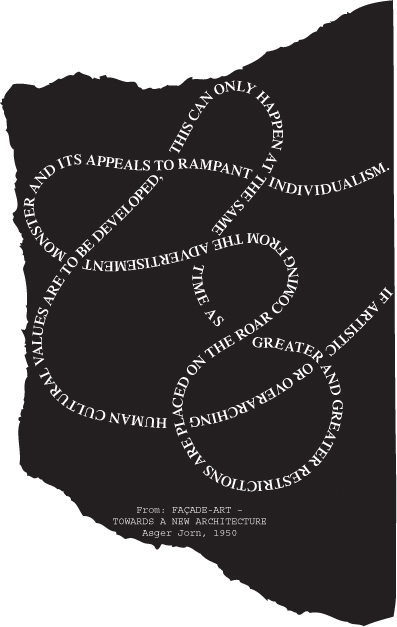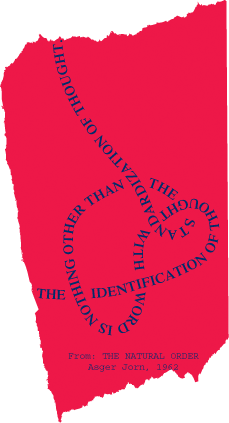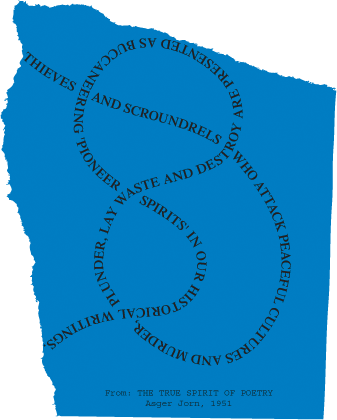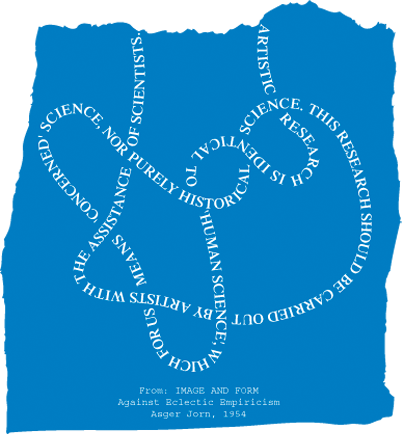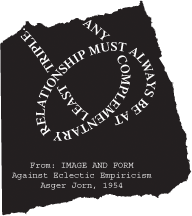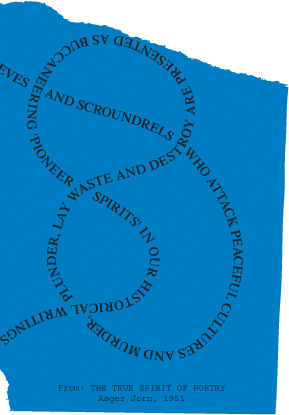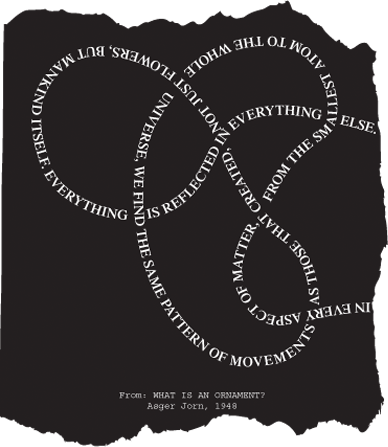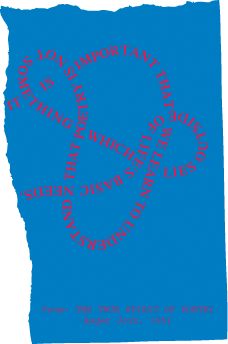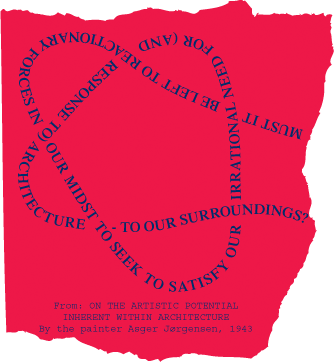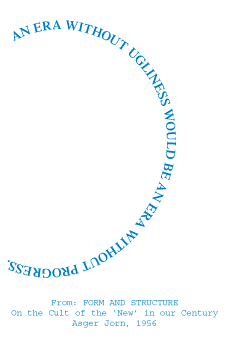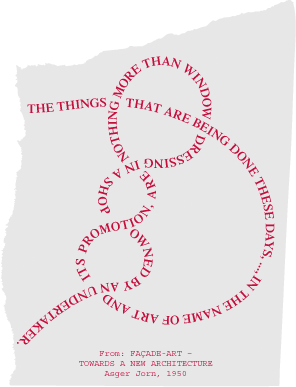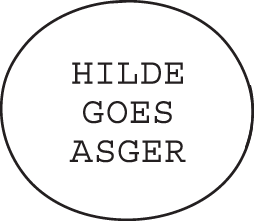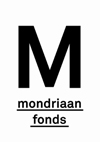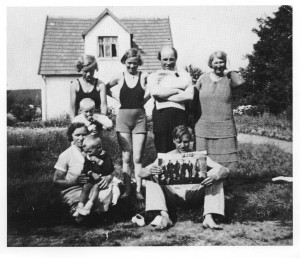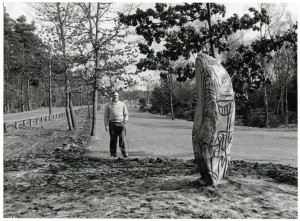JORN AS A COMMUNIST
This is a brief report on Morten Thing’s contribution to the ‘Cut and Thrust: Reconsidering Asger Jorn’ seminar workshop which took place at the Museum Jorn in March 2012. Below, you will also find his answer to my question about Jorn’s continued membership of the Communist Party.
Morten Thing, writer and research librarian at the in Cultural History at RoskildeUniversity, gave a thorough, chronological overview on Jorn as a communist. He described Jorn starting out as a passionate romantic member of the Communist Party who was however from the beginning strongly opposed to art becoming a political tool in itself, and to style doctrines. Jorn’s unorthodox approach (which he was infused with at an early age by his mentor/father figure Christian Christensen) lead him to formulate such essential critique on Marxian economics that Jorn himself believed it would have led to dismemberment of the Communist Party, had they ever actually read his critiques. Jorn stayed a member of the party until his death though.
On a personal note: What I had secretly been hoping for, is that Thing’s presentation would also include Jorn’s theory of what he called triolectics. This didn’t happen, but I have to admit that it would probably have required Thing´s talk to last at least thirty minutes longer …. Anyway, triolectics, this “thinking device” as Peter Shield calls it, merges Niels Bohr’s theory of complementarity and Marxian dialectical materialism. One of the attendees of the seminar stated that once I would be able to fully comprehend this, I would basically have a grip on the essence of Jorn’s thinking. I can’t unfortunately claim that I am there yet! Morten Thing did bring up something that keeps coming back to me though, an article by Jorn which only appeared in Danish I believe but which in English would translate into ‘Everclean a rational human’. The article supposedly is a semi-fictional story of the life of a functionalist man called Everclean, and was an attack on Poul Henningsen, party leader and a functionalist architect. Sounds like it would be fun to read.
Question to Morten Thing: You described Jorn as a passionate romantic member of the Communist Party, in the first years of his membership. In the light of Jorn’s later critiques on Marxian economics, and in contrast to that, his continued membership of the Communist Party, would you say he never ceased to be romantic?
Answer: To be a ‘romantic’ communist it means at least in words to be a ‘stalinist’. Jorn’s early texts leaves no doubt, that he seriously tries to write in the communist lingo. What is most severe to the place of art in his understanding is, that there is a direct link from one’s political views to one’s art. Therefore Diego Rivera is seen as a traitor to art and communism because he is a friend of Trotsky. This doctrine or close circuit, he changes during the war, seeing that the relation between art and politics and society in all is much more complicated. In his texts from the years shortly after the war, he still in words try offensively to defend the CP, but leaving the art/society question out. I see this as a sign of the development of a revolutionary thinker struggling with the understanding of art and the CP-discourse. Although he defies the CP understanding, he never leaves the party, but he knows that his views are not those of the CP. In that way he is a romantic revolutionary and I see this as a strong link back to Christian Christensen, the source of his collectivist and revolutionary thinking.
